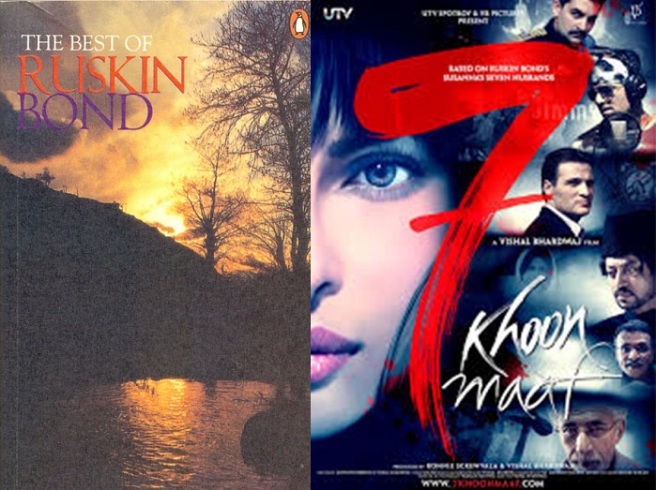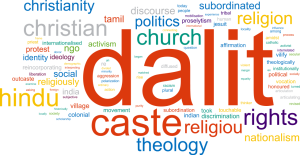Rajeshwari N

Motivation behind writing this paper:
I distinctly recall this one particular evening when I discovered a dusty, tattered copy of a large, hard-bound fairy tale book, amongst piles of magazines and other books at my grandfather’s place. The disappointment which I felt upon reading the story of ‘Cinderella’ from that book is one emotion which I can still relate to. Unlike the Disney picture book version which I had diligently consumed with all my meals, this story was bloody and was also quite complicated. Moreover, back then my eight year old mind did not know what to make of Prince Charming in that story, because he required blood soaked stalking’s, each time, to make him realize that he was not with his ‘chosen one’!
Upon recalling this incident year’s later numerous questions continue to puzzle me. One of the foremost questions was how despite having read this narrative of Cinderella, I was still deeply attached to the pictorial and colourful version manufactured by Disney. What constituted the basis of this attachment? Another pondering question (which is allied to the former) is how do young children receive these stories? Do pictures and colourful methods of articulation aid comprehension among young children?
As an attempt to answer the above mentioned questions, this paper places its primary focus on the usage of books as a medium of storytelling, and attempts to present a comparison between the effects of narrative (or text based) story books to picture books, in fostering learning and comprehension skills among children. The paper makes use of solely secondary research materials; and through these sources a comparison between the two methods of storytelling is drawn. However, the paper holds the view that illustrations prevails textual content in aiding comprehension skills among children during their elementary school years, and this much of the research material referred to in this paper support this view.
Text versus images in storytelling:
The word ‘story’ can be defined in numerous ways. However, most often this word is comprehended as an account of imaginary or real events, narrated either for entertainment or as a medium of instruction. It is often narrated with the objective to impart themes which revolve around certain values, or to inculcate awareness on a particular cultural practice or a significant event in history. Stories are often narrated using different mediums and it encompasses oral methods of storytelling (a practice common among several indigenous cultures), written narratives i.e. texts (such as in novels and short-stories) and the usage of sounds and images (such as in films and games).
Reading habits are viewed as an integral part in inculcating literacy among children. Most stories or works of fiction written for children are pedagogic in nature as they cater to inculcating certain moral values. Stories written by Enid Blyton, Roald Dahl and other writers, whose writing is categorised under the genre of ‘children’s literature’, often based their stories on adventures and the importance of being good-natured and honest. Enid Blyton’s ‘Amelia Jane’ series has a didactic tone as it instructs its child readers to not be troublesome through the usage of a notorious protagonist named Amelia Jane. Similarly, her ‘Noddy’ series revolve around the themes of honesty and righteousness by focussing on the adventures of the protagonist named Noddy. Her novel titled ‘Billy Bob tales’ centres around the intimate bond shared between siblings. Likewise, Roald Dahl’s most popular novel ‘Charlie and the Chocolate Factory’ also revolves around themes which emphasize on the importance of being honest and truthful.
Most of the books stated above caters to children who fall under the age group ranging between six to twelve years of age, and basic reading skills in English is a prerequisite in order to comprehend the textual content in these books. The storyline in most of these stories follow the Freytag’s pyramid structure of storytelling, which comprises of the following five acts- exposition, rising action, climax, falling action and denouement. However, how does reading aid a child’s development? Moreover, how do children comprehend the textual content and interpret the message conveyed in these books?
In the paper titled ‘The effects of storytelling and story reading on the oral language complexity and story comprehension of young children’, it is stated that ‘story reading’ benefits children with language acquisition and literacy, and that children acquire vocabulary growth and many other skills through this process. (Isbell, Sobol, Lindauer and Lowrance, 158) The paper also states that when a story is read the primary reference for interpretation is the text and that it helps foster creativity and imagination. (Isbell, Sobol, Lindauer and Lowrance, 158)
Reading might seem like a simplistic activity to most adults. Nevertheless, most people seldom acknowledge the fact that a lot of skills are involved in trying to acquire meaning from print. In their paper titled ‘Understanding and Supporting comprehension development in the elementary and the middle grades’, Marjorie Y Lipson and J. David Cooper state that the primary purpose of reading is to comprehend the meaning of what is written in the text, and that comprehension is a complex process which requires ‘intentional cognitive effort on the part of the reader’. (Lipson and Cooper, 1) Moreover, in their paper they state that one of the most intriguing aspects of comprehension is that it varies from person to person and that this trait is common among both adults and children. (Lipson and Cooper, 1) By referring to various sources, they state that prior knowledge and experience play a crucial role in how a child interprets the textual content in a book and that a good reading program at the kindergarten level in schools can foster the comprehension and learning skills in elementary school children. (Lipson and Cooper, 5) Moreover, Lipson and Cooper emphasize on the role played by verbal fluency in enabling children decode the meaning of the text. (Lipson and Cooper, 6)
However, most studies, including the one conducted by Lipson and Cooper, argue that picture books are a more efficient tool in fostering learning and comprehension skills among elementary school children. The pictorial method of story-telling dates back to the early cave paintings. The concept of using picture books as a medium to narrate a story can be dated back to over 130 years ago when artist and illustrator Ralph Caldecott elevated the picture as a story telling device than using it as a mere illustration of a text. (‘A brief history of children’s picture books and the art of storytelling’) Picture books primarily use pictures mainly drawings to narrate the story and contain minimum or little text. It is stated that back in the 1950’s due to a peculiar cultural shift the line separating the author and artist started to blur, and that a set of designers set out to write and illustrate picture books as a means to enhance visual thinking. . (‘A brief history of children’s picture books and the art of storytelling’)
So, how do picture books serve as a storytelling medium to enhance the learning and comprehension skills among elementary school children? The paper titled ‘Illustrations, texts and the child reader: What are picture books in children’s storybooks for?’ by Zhihui Fang, examines the significance of illustrations to the child reader. Fang writes that the visual content in picture books helps establish settings, defines and attributes certain overt traits to characters, and enables in developing the plot/story-line. Countering the views of several critics, who claim that the illustrations in picture books serve as a distraction to the child reader (as it would hinder their language acquisition) Fang states that the contribution of pictures to a child’s overall literate behaviour seems to be far greater than its potential dangers. (Fang, 137) Fang writes that illustrations serve as tools which would entice the child reader to interact with the text and that it would enable them to derive hidden objects or meanings from the story. In contrast to the stories narrated through words, stories in picture books often contain a jumpy rhythm to it. (Fang, 137) Fang gives the example of the illustrations used in Keith Beker’s story titled ‘Who’s the beast’, wherein young readers are motivated to search and identify the beast, by following the illustrations.
Moreover, Fang argues by stating that pictures aid children’s creativity. She states that pictures enable children to make connections with real life situations and help them construct meaning in the process. Alongside fostering a child’s aesthetic appreciation for art, Fang writes that illustrations serve as mental scaffolds for the child reader, thus enhancing their understanding of the linguistic text. Through her paper, Fang emphasizes on the need to incorporate illustration in text books as it would enable in enhancing the better understanding of the text. Mirroring Fang’s view, in the paper titled ‘The importance of reading picture books to children’, Nobuo Mastaka states that visuals accompanied by an audio, enhance the verbal acquisition and comprehension skills in a child reader.
In Conclusion:
In my opinion, illustrations/images aid a better understanding of the text and are thus better received among child readers. Furthermore, even among adults several studies have proven that majority of the people tend to remember events and details through images than through words, and that a human being’s ‘iconic memory’ (ability to recall images) is stronger than his/her ‘echoic memory’ (ability to recall information provided by an aural medium). Therefore, it would not be incorrect to assume that images influences one’s reading and comprehension. This can be best observed in mediums wherein images and texts co-exist such as newspapers, graphic novels etc, wherein images play a definitive role in guiding ones understanding of the textual content.
The merit of the image over the text to aid comprehension could thus be regarded as one of the many reasons behind the popularity of Disney’s version of popular fairy-tales over the textual versions that preceded it.
Articles and websites cited:
‘Analysing a story’s plot: Freytag’s Pyramid’ http://www.ohio.edu/people/hartleyg/ref/fiction/freytag.html
‘A brief history of children’s picture books and the art of storytelling’ www.brainpickings.org/2012/02/24/childrens-picturebooks
Isbell, R., Sobol, J., Lindauer, L. et al. ‘The effects of storytelling and story reading on the oral language complexity and story comprehension of young children’. Early Childhood Education Journal, 32, 3 (2004) Pg. no.158.
Lipson Y, Marjorie, J David, Cooper ‘Understanding and Supporting comprehension development in the elementary and the middle grades’. Houghton Mufflin Reading, Pg. Nos. 1-6.
Zhihui, Fang. ‘Illustrations, texts and the child reader: What are picture books in children’s storybooks for?’ Reading Horizons, 37, 2 (1996) Pg. no. 137.








